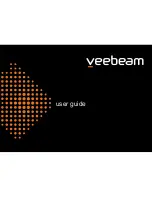
RIP timers
RIP employs three timers: update, timeout and garbage-collect.
Update timer: defines the interval between routing updates.
Timeout timer: defines the route aging time. If no update for a route is received within
the aging time, the metric of the route is set to 16 in the routing table.
Garbage-collect: timer defines the interval from when the metric of a route becomes
16 to when it is deleted from the routing table. During the garbage-collect timer length,
RIP advertises the route with the routing metric set to 16. If no update is announced
for that route after the garbage-collect timer expires, the route will be deleted from the
routing table.
Routing loops prevention
RIP is a distance vector (D-V) routing protocol. Since an RIP router advertises its own routing
table to neighbors, routing loops may occur.
RIP uses the following mechanisms to prevent routing loops.
Counting to infinity: The metric value of 16 is defined as unreachable. When a routing
loop occurs, the metric value of the route will increment to 16.
Split horizon: A router does not send the routing information learned from a neighbor
to this neighbor to prevent routing loops and save bandwidth.
Poison reverse: A router sets the metric of routes received from a neighbor to 16 and
sends back these routes to the neighbor to help delete such information from the
neighbor’s routing table.
Triggered updates: A router advertises updates once the metric of a route is changed
rather than after the update period expires to speed up network convergence.
Operation of RIP
The following procedure describes how RIP works.
1)
After RIP is enabled, the router sends request messages to neighboring routers.
Neighboring routers return Response messages including information about their routing
tables.
2)
After receiving such information, the router updates its local routing table, and sends
triggered update messages to its neighbors. All routers on the network do the same to
keep the latest routing information.
3)
By default, an RIP router sends its routing table to neighbors every 30 seconds.
4)
RIP ages out routes by adopting an aging mechanism to keep only valid routes.
RIP Version
RIP has two versions, RIPv1 and RIPv2.
RIPv1, a classful routing protocol, supports message advertisement via broadcast only. RIPv1
protocol messages do not carry mask information, which means it can only recognize routing
information of natural networks such as Class A, B, and C. That is why RIPv1 does not support
discontinuous subnets.
195
















































